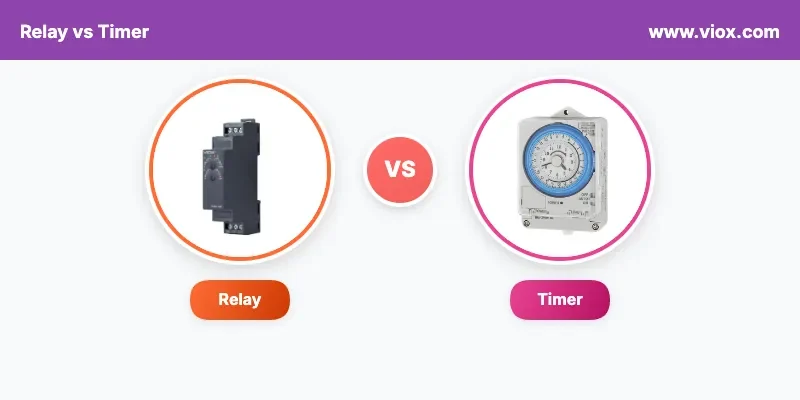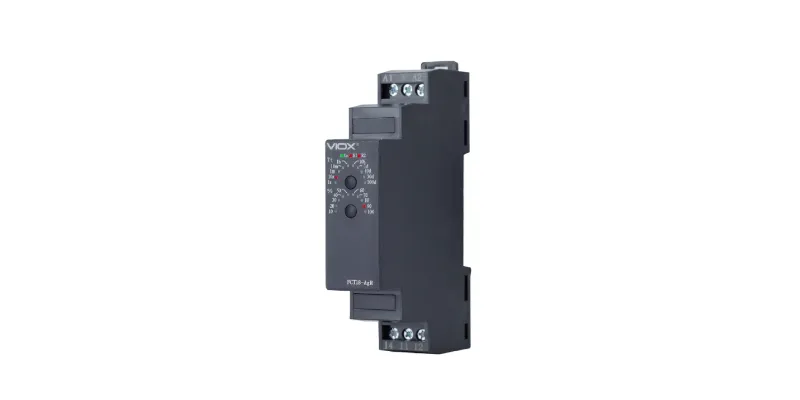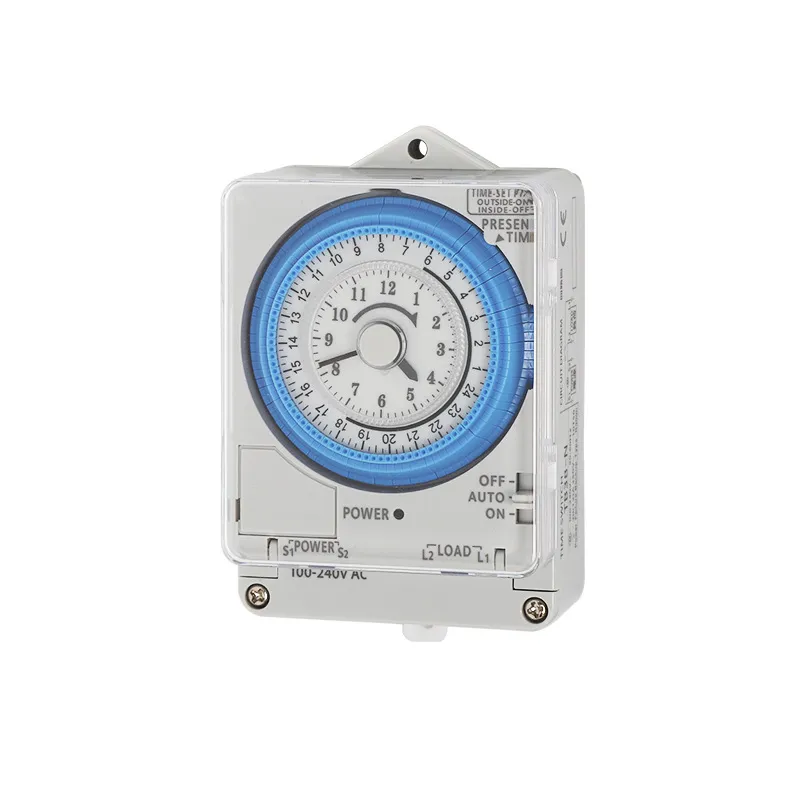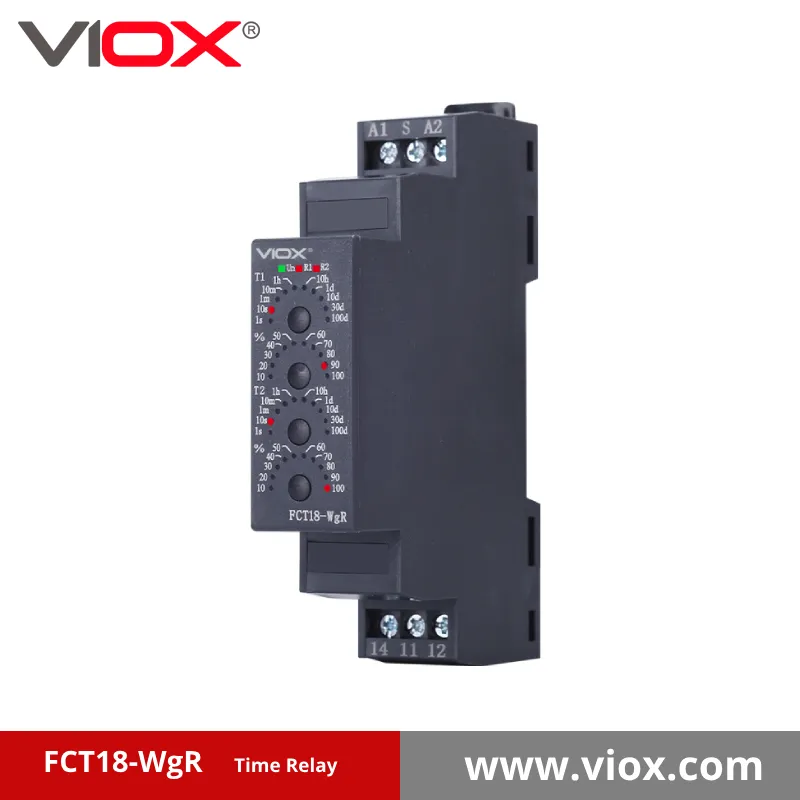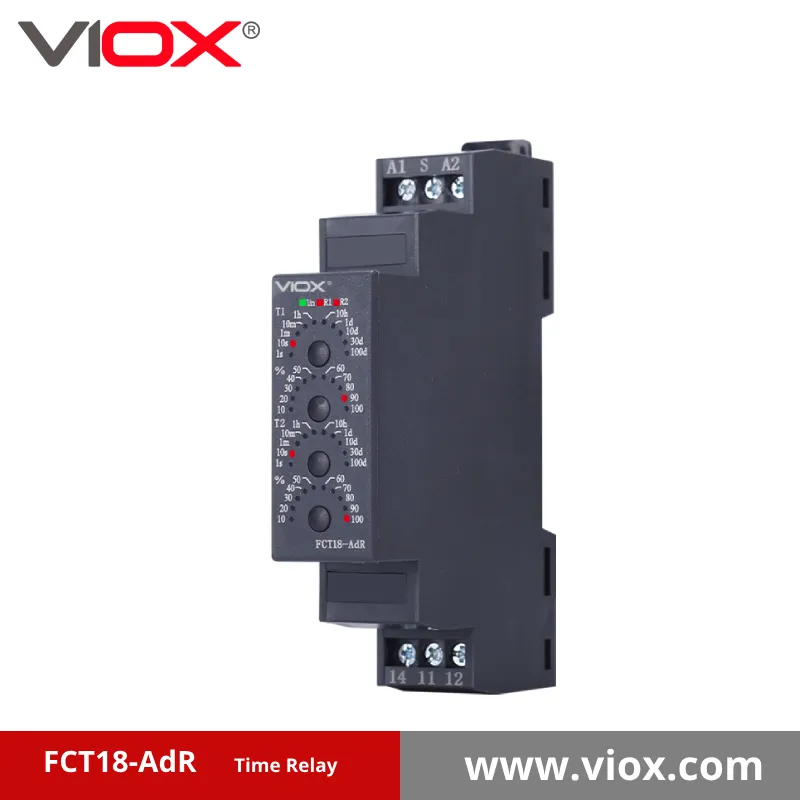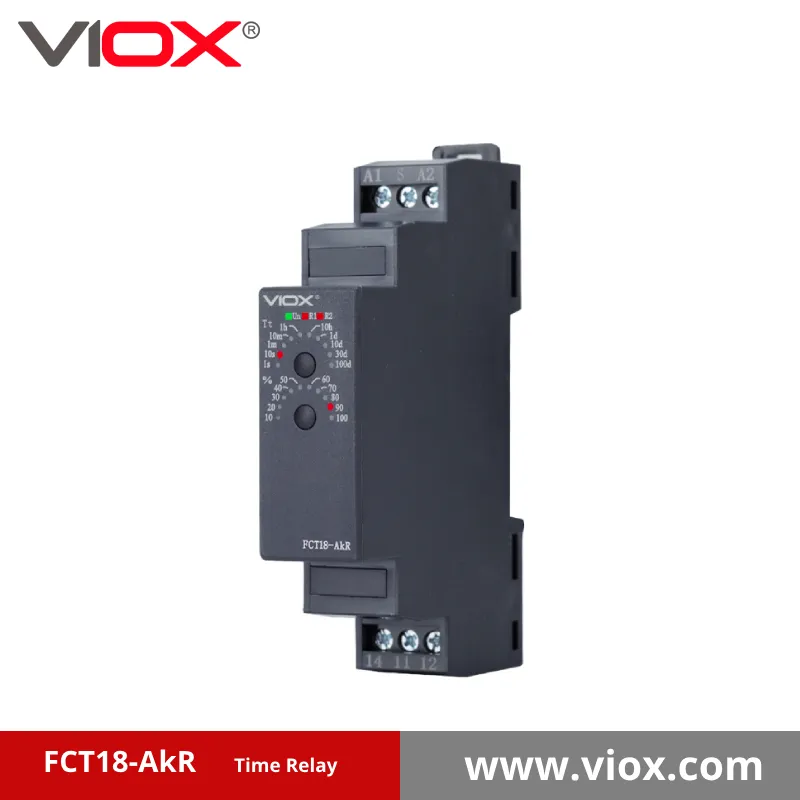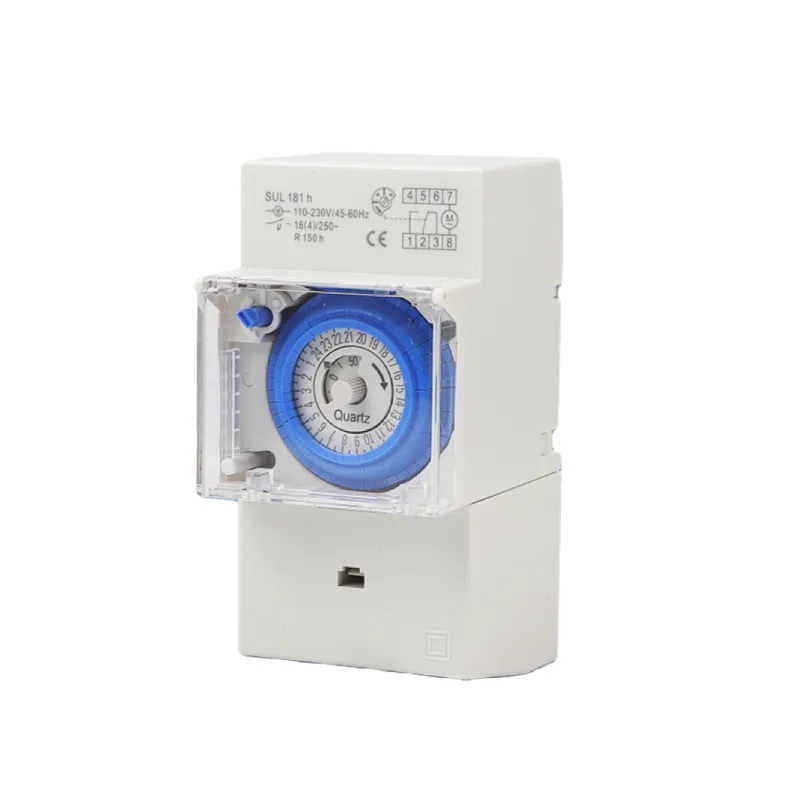A relay is an electrically operated switch that controls one circuit by opening or closing contacts in another circuit, while a timer is a device that controls electrical circuits based on preset time intervals. Both devices are essential components in electrical control systems, but they serve distinctly different functions that determine when and how you should use each one.
Understanding the difference between relays and timers is crucial for anyone working with electrical control systems, automation equipment, or industrial applications. This comprehensive guide will help you make the right choice for your specific application while ensuring safety and code compliance.
What is a Relay?
ক রিলে is an electromagnetic switch that uses a small electrical current to control a much larger current in a separate circuit. When the relay coil receives power, it creates a magnetic field that physically moves metal contacts to either open or close electrical connections.
Key Relay Characteristics:
- Instant operation when power is applied or removed
- Electrical isolation between control and switched circuits
- Multiple contact configurations (normally open, normally closed, changeover)
- Current amplification capability (small control current switches large load current)
- No timing function built into basic relays
What is a Timer?
ক timer is a time-delay device that controls when electrical circuits turn on or off based on preset time intervals. Timers can delay the activation of equipment, control how long devices operate, or create specific timing sequences in automated systems.
Key Timer Characteristics:
- Time-based control with adjustable delay periods
- Various timing functions (on-delay, off-delay, interval, repeat cycle)
- Digital or analog time setting mechanisms
- Built-in timing circuits using electronic or mechanical methods
- প্রোগ্রামেবল টাইমিং সিকোয়েন্স in advanced models
Relay vs Timer: Comprehensive Comparison
| বৈশিষ্ট্য | রিলে | Timer |
|---|---|---|
| প্রাথমিক ফাংশন | Electrical switching | Time-based control |
| অপারেশন গতি | Instant (milliseconds) | Delayed (seconds to hours) |
| নিয়ন্ত্রণ পদ্ধতি | Voltage presence/absence | Preset time intervals |
| সার্কিট আইসোলেশন | Yes, complete isolation | Varies by design |
| Timing Capability | None (basic relays) | Core functionality |
| শক্তি খরচ | Low when activated | Continuous during timing |
| জটিলতা | Simple electromagnetic device | Complex timing circuits |
| খরচের পরিসর | $5-50 (basic models) | $25-500+ (depending on features) |
| সাধারণ অ্যাপ্লিকেশন | Motor control, lighting switching | Delay circuits, automation sequences |
| ইনস্টলেশন জটিলতা | Simple wiring | May require programming |
প্রয়োগ এবং ব্যবহারের ক্ষেত্রে
রিলে কখন ব্যবহার করবেন
Relays are ideal for applications requiring:
- Motor Starting and Stopping
- Controlling large motors with small control switches
- Protecting control circuits from high motor currents
- Enabling remote motor operation
- আলো নিয়ন্ত্রণ ব্যবস্থা
- Switching high-wattage lighting from low-voltage controls
- Creating lighting zones in commercial buildings
- Interfacing with building automation systems
- Safety Interlocks
- Emergency stop circuits
- Door interlock systems
- Machine safety controls
- Signal Amplification
- Converting low-current sensor signals to switch high-power loads
- Interfacing between different voltage systems
- Creating multiple outputs from single input
When to Use Timers
Timers are essential for applications requiring:
- Delayed Equipment Starting
- HVAC system staging to prevent simultaneous startup
- Pump control in water systems
- Lighting delay circuits
- Automatic Equipment Shutdown
- Fan run-on timers after heating systems turn off
- Pump run-out timers for remaining fluid
- Safety equipment timeout functions
- Process Control Sequences
- Manufacturing equipment timing
- Chemical mixing processes
- Automated assembly line control
- শক্তি ব্যবস্থাপনা
- Scheduled equipment operation
- Peak demand reduction
- Automatic lighting control
Types of Relays and Timers
Relay Categories
| আদর্শ | বিবরণ | সাধারণ অ্যাপ্লিকেশন |
|---|---|---|
| General Purpose | মৌলিক এসপিডিটি/ডিপিডিটি contacts | Lighting, small motors |
| Power Relays | উচ্চ বর্তমান ক্ষমতা | Large motors, heaters |
| Safety Relays | Force-guided contacts | জরুরি স্টপ সিস্টেম |
| Solid State | No moving parts | Frequent switching applications |
| Latching | Maintains position without power | Energy-saving applications |
Timer Categories
| আদর্শ | বিবরণ | সময়সীমা |
|---|---|---|
| On-Delay | Delays turn-on after trigger | 0.1 sec – 24 hours |
| Off-Delay | Delays turn-off after trigger removed | 0.1 sec – 24 hours |
| Interval | Turns on for set period then off | 0.1 sec – 999 hours |
| Repeat Cycle | Continuous on/off cycling | Variable cycles |
| Multi-Function | Programmable timing modes | Highly variable |
Selection Criteria and Expert Tips
Choosing the Right Relay
Key factors to consider:
- যোগাযোগ কনফিগারেশন
- Determine how many circuits you need to control
- Consider normally open vs. normally closed requirements
- ভবিষ্যতের সম্প্রসারণের চাহিদার হিসাব রাখুন
- বর্তমান এবং ভোল্টেজ রেটিং
- Size contacts for actual load current plus 25% safety margin
- Verify coil voltage matches control circuit
- Consider inrush current for motor loads
- পরিবেশগত প্রয়োজনীয়তা
- Choose appropriate enclosure rating (নেমা 1, 4, 7, etc.)
- Consider temperature and humidity extremes
- Account for vibration in industrial applications
💡 বিশেষজ্ঞের পরামর্শ: Always use contactors rather than general-purpose relays for motors over 1 HP to ensure proper arc suppression and contact life.
সঠিক টাইমার নির্বাচন করা
Critical selection parameters:
- Timing Function Needed
- Identify whether you need on-delay, off-delay, or interval timing
- Consider multi-function timers for complex sequences
- Evaluate need for manual override capabilities
- Time Range Requirements
- Select timer with appropriate minimum and maximum time settings
- Allow for potential future timing adjustments
- Consider whether digital or analog adjustment is preferred
- Power Supply Compatibility
- Verify timer operates on available control voltage
- Consider power consumption during timing periods
- Account for backup power requirements if applicable
💡 বিশেষজ্ঞের পরামর্শ: Use electronic timers rather than mechanical ones in applications requiring frequent timing adjustments or high precision.
নিরাপত্তা বিবেচনা এবং কোড সম্মতি
Electrical Safety Requirements
⚠️ গুরুত্বপূর্ণ নিরাপত্তা সতর্কতা: Always follow এনইসি (জাতীয় বৈদ্যুতিক কোড) requirements when installing relays and timers. Improper installation can result in equipment damage, fire, or personal injury.
Essential safety practices:
- Use properly rated overcurrent protection for all circuits
- Ensure adequate wire sizing for connected loads
- Provide appropriate grounding per NEC Article 250
- Install arc-fault protection where required by local codes
পেশাদার ইনস্টলেশনের প্রয়োজনীয়তা
When to use certified electricians:
- Any installation involving voltages over 50V
- বাণিজ্যিক বা শিল্প অ্যাপ্লিকেশন
- Integration with fire safety or security systems
- Modification of existing electrical panels
সাধারণ সমস্যা সমাধান
Relay Problems and Solutions
| সমস্যা | সম্ভাব্য কারণ | সমাধান |
|---|---|---|
| Relay won’t energize | No coil voltage | Check control circuit wiring |
| Contacts weld shut | Excessive inrush current | Install current limiting or use contactor |
| Coil burns out | Overvoltage condition | Verify supply voltage ratings |
| অনিয়মিত অপারেশন | দুর্বল সংযোগ | Clean and tighten all terminals |
Timer Problems and Solutions
| সমস্যা | সম্ভাব্য কারণ | সমাধান |
|---|---|---|
| Timing inaccurate | Temperature effects | Use temperature-compensated timer |
| Timer won’t start | Input signal too brief | Check minimum pulse width requirements |
| Timing drifts over time | Component aging | Calibrate or replace timer |
| Display not working | বিদ্যুৎ সরবরাহের সমস্যা | Verify correct supply voltage |
খরচ বিশ্লেষণ এবং ROI বিবেচনা
প্রাথমিক বিনিয়োগের তুলনা
Basic relay systems:
- Simple relay: $10-25
- Installation labor: $50-100
- Total project cost: $60-125
Basic timer systems:
- Electronic timer: $50-150
- Installation and programming: $100-200
- Total project cost: $150-350
দীর্ঘমেয়াদী মূল্য নির্ধারণ
Relay advantages:
- কম প্রাথমিক খরচ
- ন্যূনতম রক্ষণাবেক্ষণের প্রয়োজনীয়তা
- Long service life (10+ years typical)
- Simple replacement procedures
Timer advantages:
- Energy savings through optimized control
- Reduced manual operation requirements
- Improved process consistency
- Enhanced system automation capabilities
ইনস্টলেশনের সর্বোত্তম অনুশীলন
রিলে ইনস্টলেশন নির্দেশিকা
- Mounting Orientation
- Install relays vertically when possible for optimal contact performance
- Avoid mounting upside-down to prevent contact welding
- Ensure adequate ventilation around relay enclosure
- Wiring Practices
- Use proper wire gauge for connected loads
- Implement surge suppression for inductive loads
- Label all wires for future maintenance
- পরীক্ষার পদ্ধতি
- Verify coil resistance before installation
- Test contact operation with multimeter
- Check for proper contact opening and closing
Timer Installation Guidelines
- বিদ্যুৎ সরবরাহের প্রয়োজনীয়তা
- Verify correct voltage and frequency
- Ensure stable power source for accurate timing
- Consider UPS backup for critical applications
- Programming and Setup
- Document all timing settings for future reference
- Test timing accuracy with stopwatch during commissioning
- Provide written operating instructions for users
- পরিবেশ সুরক্ষা
- Use appropriate NEMA-rated enclosures
- Protect against electromagnetic interference
- Ensure adequate temperature control in enclosures
সচরাচর জিজ্ঞাস্য
Q: Can a relay perform timing functions?
A: Basic relays cannot provide timing functions. However, time-delay relays combine relay contacts with built-in timing circuits, offering both switching and timing capabilities in one device.
Q: What’s the difference between mechanical and electronic timers?
A: Mechanical timers use clockwork mechanisms and are less accurate but more resistant to electrical interference. Electronic timers offer higher precision, more features, and programmable functions but may be affected by power quality issues.
Q: How do I know if I need a relay or a timer for my application?
A: If you need immediate switching based on an input signal, use a relay. If you need to control when something happens based on time intervals, use a timer. For both functions, consider a time-delay relay or programmable control module.
Q: What safety certifications should I look for?
A: Look for UL (Underwriters Laboratories) listing for North America, CE marking for Europe, and CSA (Canadian Standards Association) approval where applicable. Industrial applications may require additional certifications like explosion-proof ratings.
Q: Can timers and relays be used together in the same system?
A: Yes, timers and relays are commonly used together in complex control systems. Timers provide the timing logic while relays handle the actual switching of loads, creating sophisticated automation sequences.
Q: What maintenance do relays and timers require?
A: Relays typically need periodic contact cleaning and replacement after extended use. Electronic timers require minimal maintenance but should have timing accuracy verified annually. Both should be inspected for secure connections and proper mounting.
Q: How do I size a relay for motor starting applications?
A: For motor starting, select relay contacts rated for at least 6 times the motor full-load current to handle starting inrush. Better yet, use a motor starter contactor specifically designed for this application with proper overload protection.
Q: What’s the typical lifespan of relays versus timers?
A: Quality relays can operate for 10-15 years with proper installation and appropriate load sizing. Electronic timers typically last 15-20 years, while mechanical timers may require replacement every 8-12 years depending on usage frequency.
Making the Right Choice: Decision Framework
Use a Relay When:
- You need immediate switching response
- Control and load circuits require isolation
- Simple on/off control is sufficient
- Cost is a primary concern
- High current switching capability is needed
Use a Timer When:
- Time-based control is required
- Automated sequences are needed
- Energy management is important
- Process optimization is a goal
- Equipment protection requires time delays
Consider Combined Solutions When:
- Complex control sequences are required
- Both immediate and time-delayed responses are needed
- Future system expansion is anticipated
- Integration with building automation systems is planned
বিশেষজ্ঞদের সুপারিশ এবং পরবর্তী পদক্ষেপ
For optimal results:
- Consult with qualified electricians for installations involving high voltages or complex systems
- স্থানীয় বৈদ্যুতিক কোডগুলি পর্যালোচনা করুন before beginning any installation
- Document all settings and configurations for future maintenance
- ভবিষ্যতের সম্প্রসারণের পরিকল্পনা by selecting devices with additional capacity
- Implement proper labeling for all control devices and circuits
Professional consultation is recommended for:
- শিল্প অটোমেশন সিস্টেম
- Life safety applications
- Integration with existing building management systems
- High-voltage or high-current applications
- Applications requiring specific industry certifications
Understanding the fundamental differences between relays and timers enables you to design more effective control systems while ensuring safety and code compliance. Whether you’re controlling simple lighting circuits or complex industrial processes, choosing the right device for each application is essential for reliable, efficient operation.
For complex applications requiring both immediate switching and time-based control, consider consulting with automation professionals who can design integrated solutions using programmable logic controllers (PLCs) or other advanced control systems that combine the benefits of both relays and timers in sophisticated control architectures.
সংশ্লিষ্ট
Understanding Timer Switch Types, Functions & Applications

